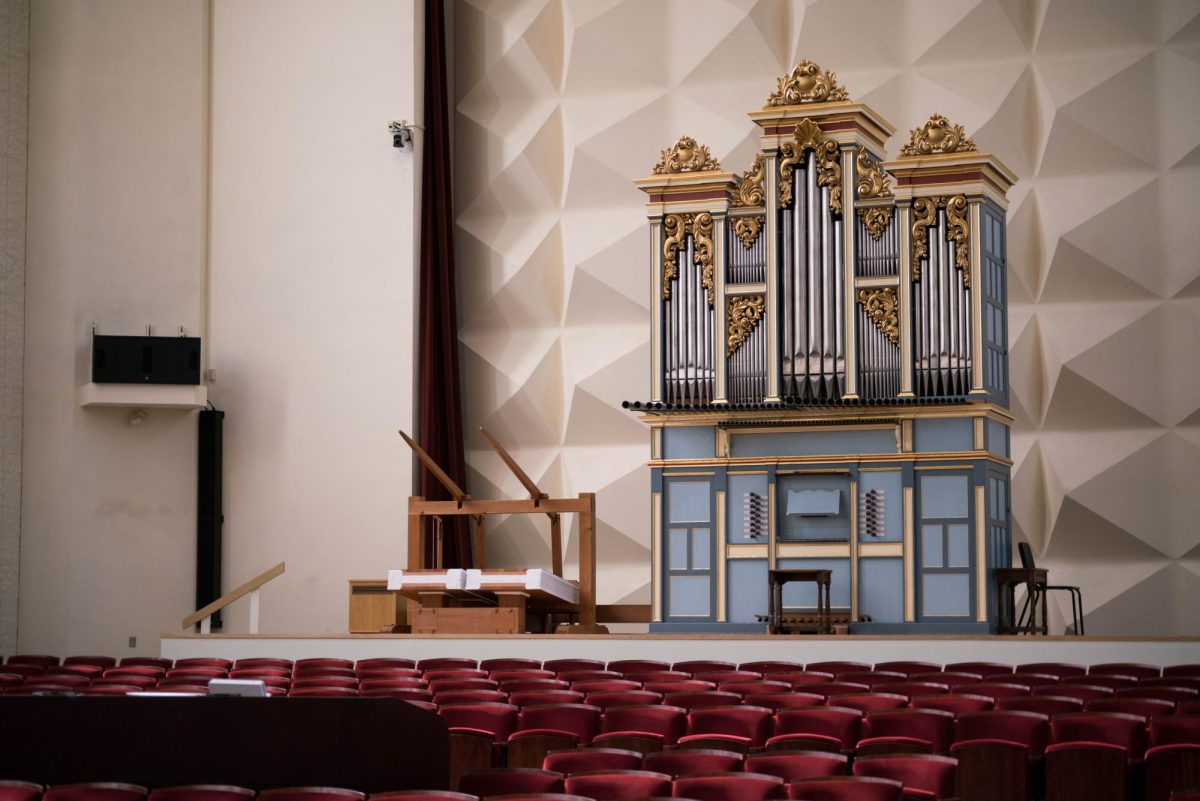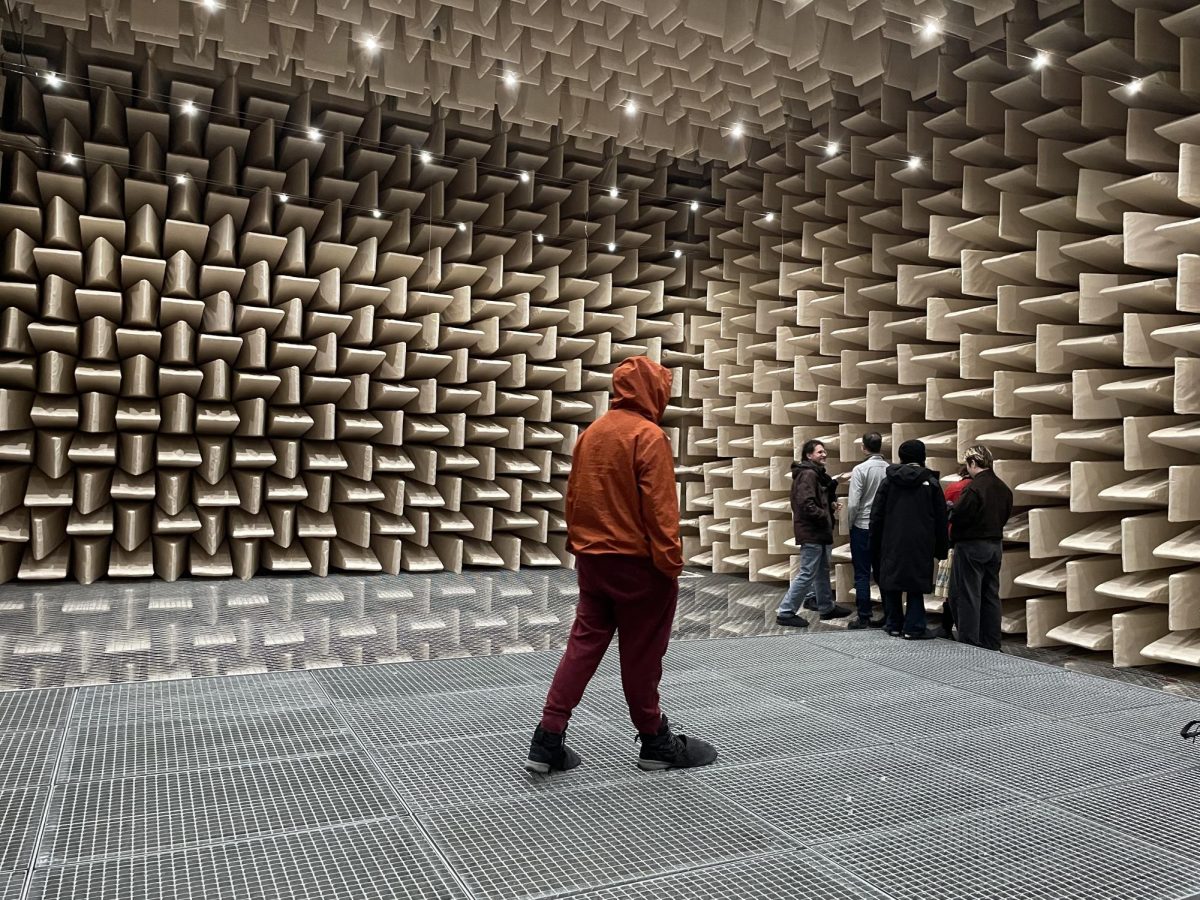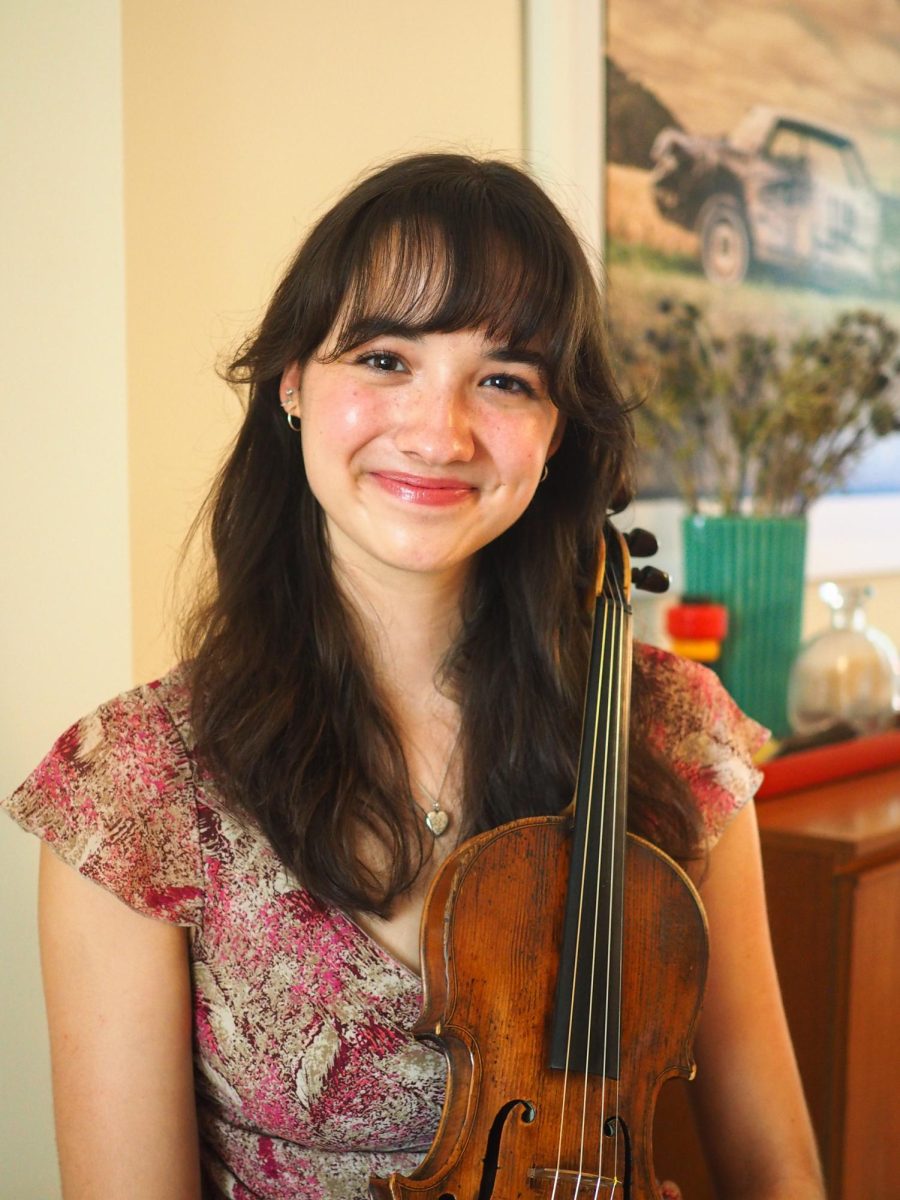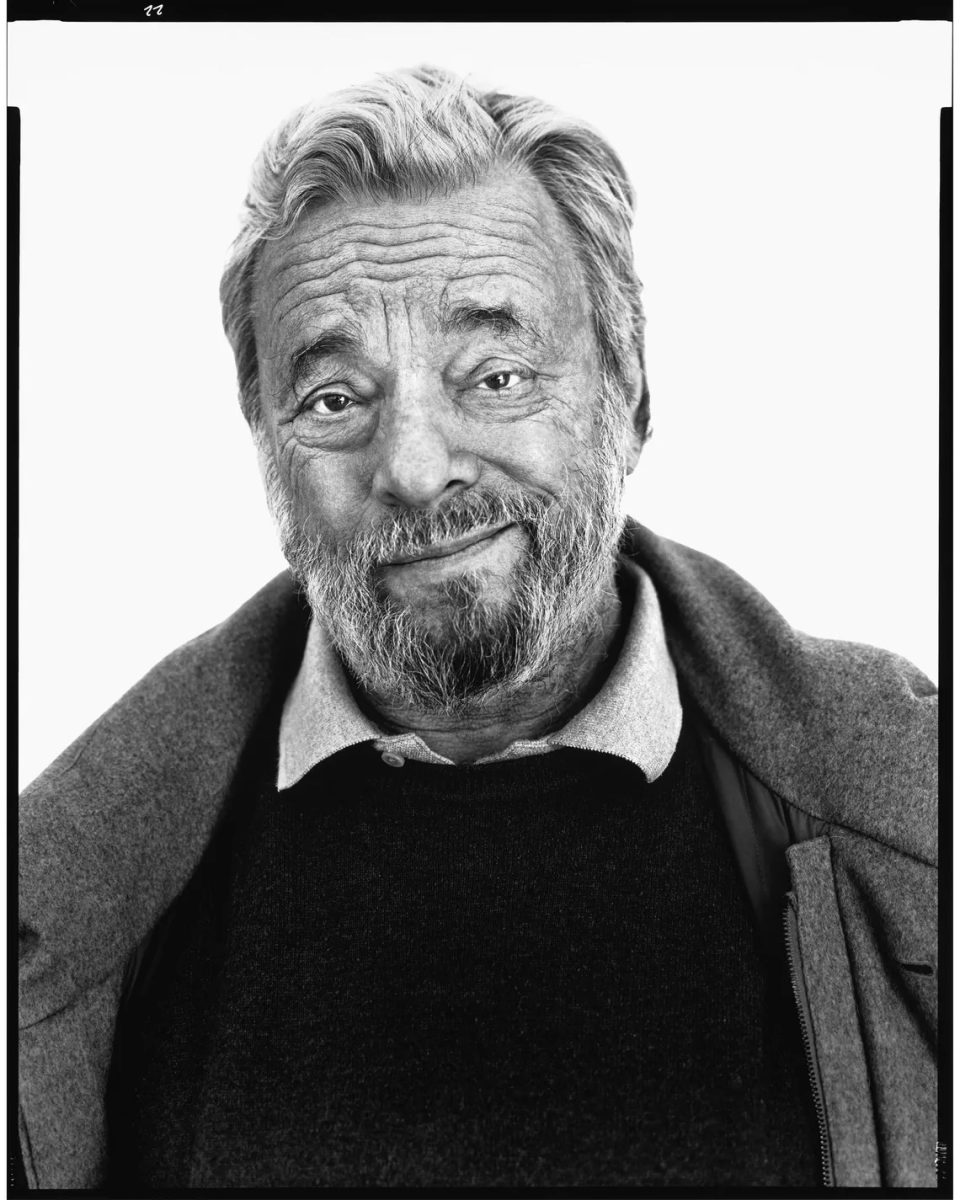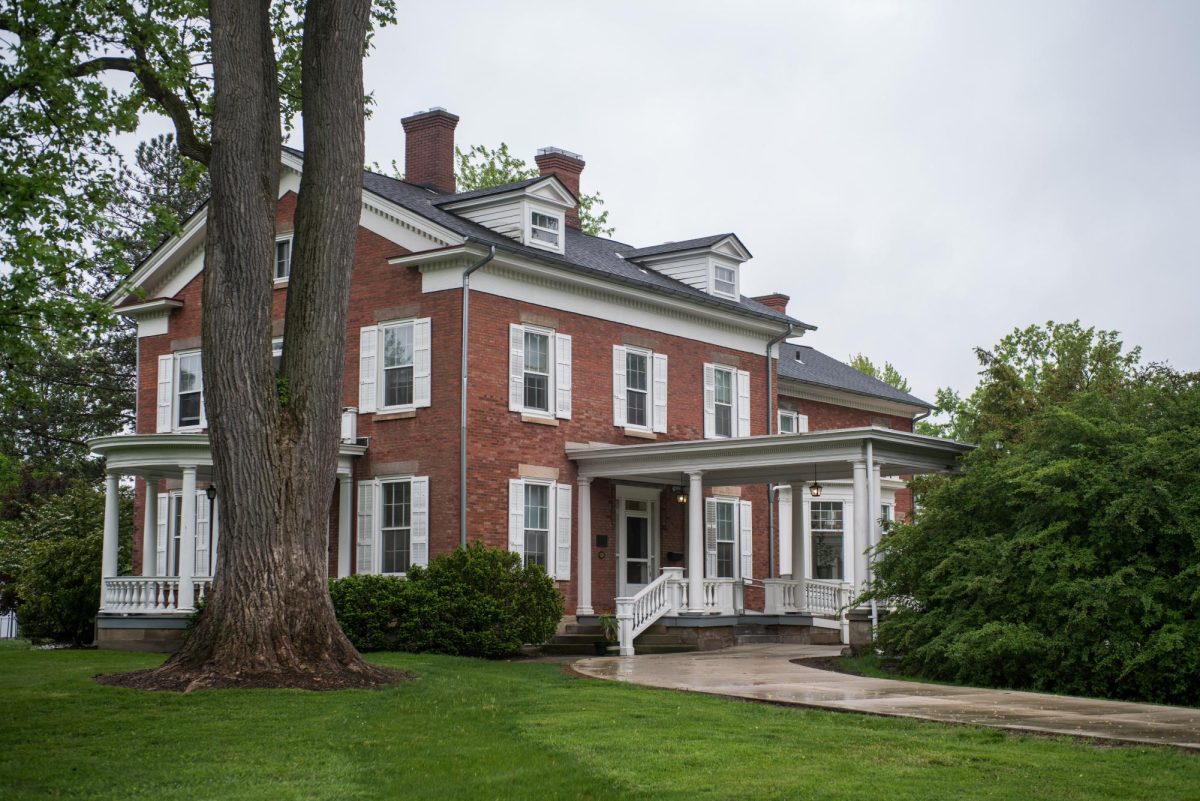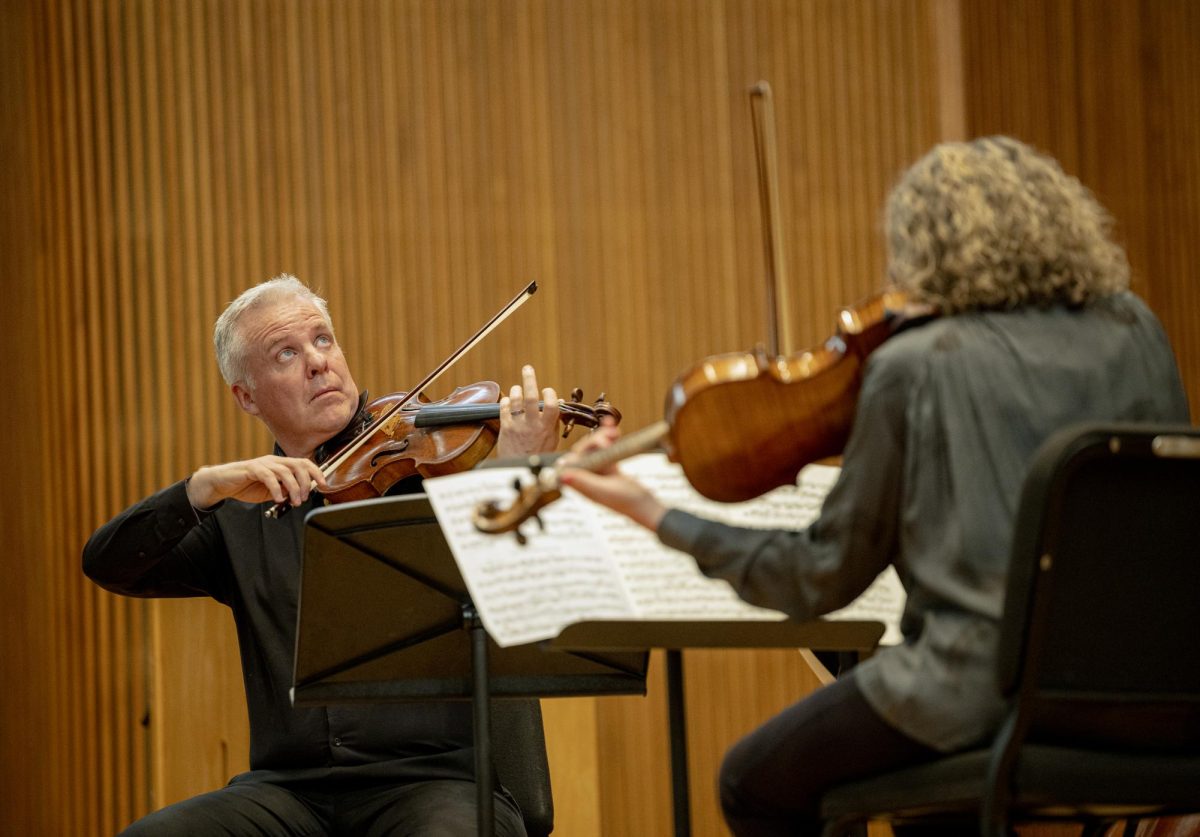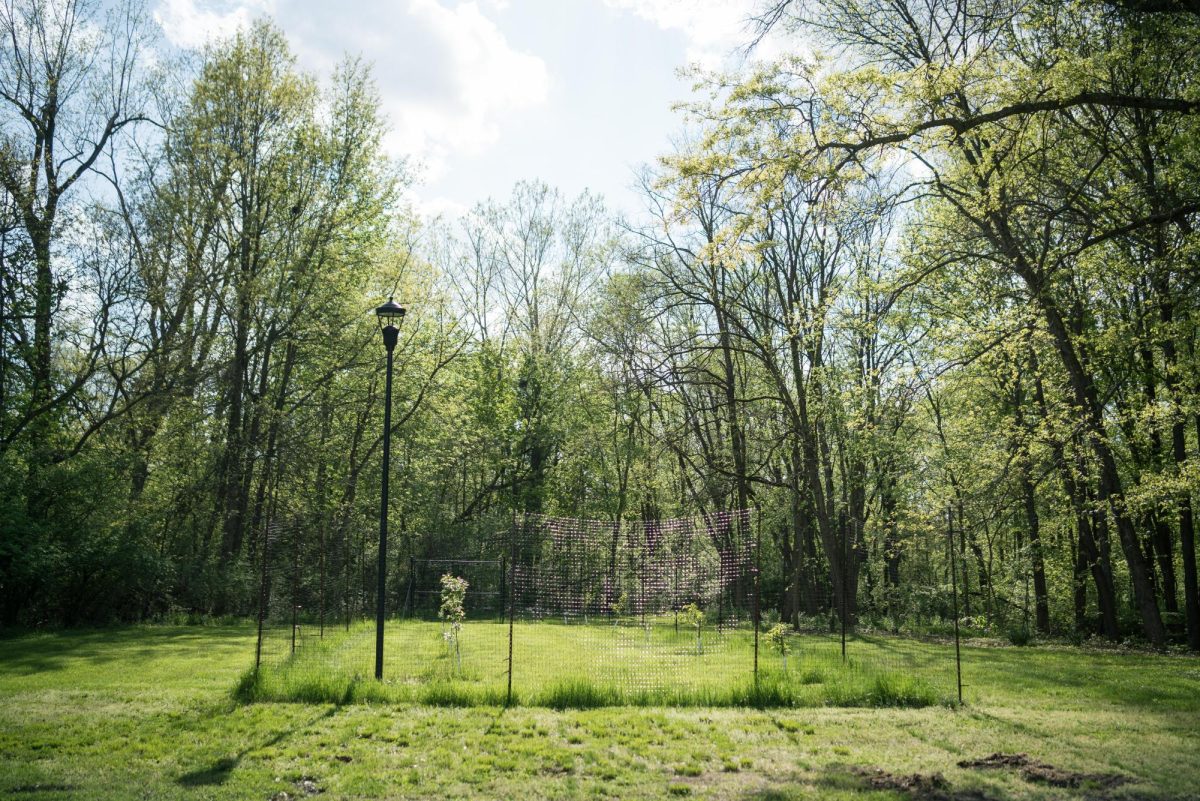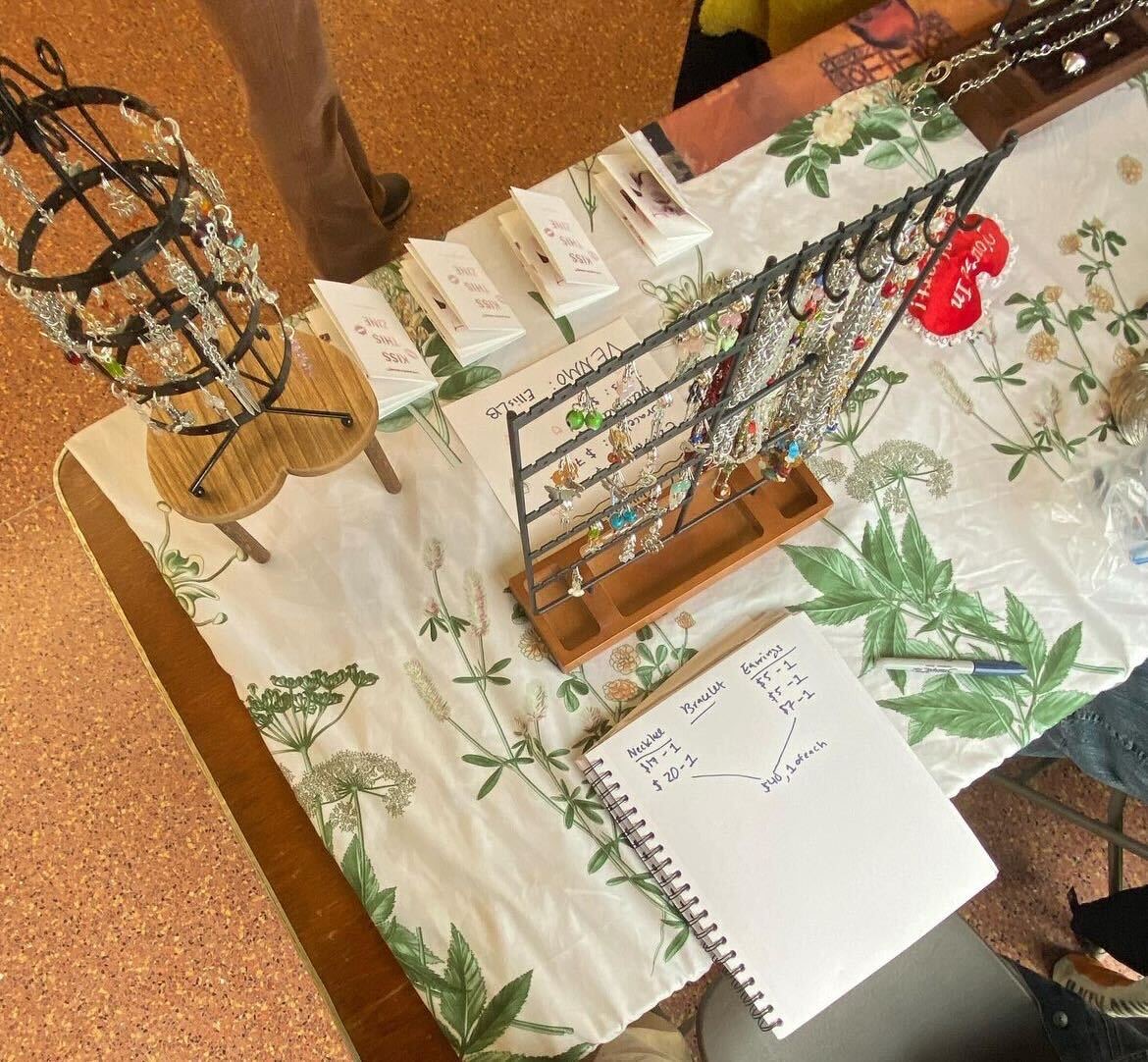Oberlin will be in the path of totality during the solar eclipse April 8. A variety of OCLIPSE events will be held on campus that day to celebrate and observe.
The TIMARA section of the OCLIPSE Concert Series is set to be held around the bandstand in Tappan Square from 2–4 p.m.
A theatrical performance will be co-directed by Raphael Sacks, OC ’09, and Geneva Cockrell, OC ’09, of the Loom Ensemble.
It will feature members of Oberlin Improvisation and Newmusic Collective as well as DANC 100 Contemporary Dance Technique students. Composer, sound artist, and instrument builder Daniel Fishkin will also present his light-reactive synthesizers called Solar Sounders.
The event will not be a typical sit-down concert, but instead one where observers can stand around, coming and going as they please.
The size of the dance course will make for an unconventional large-scale production with inventive sound design.
OINC is a Conservatory class made up of eight students playing a variety of instruments: Conservatory fourth-year Penina Biddle-Gottesman on amplified/processed voice, double-degree first-year Indigo Brandstein on alto saxophone, College fourth-year Max Curley on electric bass, double-degree second-year Savino Go on a custom software-based instrument played by a video game controller, Conservatory second-year Amanda Hergn on amplified kalimba, double-degree third-year Ethan Long on electric guitar with live processing, College fourth-year Aman Roy on electric cello, and College second-year Henry Samra on accordion.
Associate Professor of Computer Music and Digital Arts Steven Kemper is the ensemble director of OINC.
He explained that the production, which is largely improvised, is set to change a lot in the time before the eclipse.
“This is more of a happening than a concert,” Kemper said. “The overall structure is still taking shape, but there are elements of welcoming the eclipse and providing not necessarily a scientific context for audience members, but something participatory, something they can be invited into.”
As such, eclipse-related themes will be incorporated into the performance, which Kemper described as somewhere between an installation and a narrative. OINC will be performing a guided improvisation based on naturalist Walter E. Bryant’s “Ornithological Observations During the Total Solar Eclipse of January, 1889,” which Kemper described as “oddly pedestrian and not scientific,” but “cool” and “kind of funny.” Bryant’s observations will guide the narrative aspect of the concert.
Kemper assigned each OINC member a bird described in the document. Each instrumentalist has learned their bird’s call and will take turns leading the ensemble in their avian roles. The instrumental performance will also be informed by the instrumentalists’ research and reflection on eclipses, adding an impressive level of depth.
“We’ve done a lot of reading and thinking about eclipses and how people have experienced them over time, and so I think they will have a deep level of knowledge,” Kemper said.
Impressive still is the integration of the eclipse itself into the concert. The dancers will be moving Fishkin’s Solar Sounders through the performance space as the light changes. The sound generated by a Solar Sounder changes based on how much sunlight it’s receiving. Fishkin’s Solar Sounders are made out of wood, but the example instrument Kemper showed me was from a kit worked on by students, composed of a cardboard box, a solar panel, a circuit board with an amplifier, a capacitor, and a speaker. Fishkin will be contributing several iterations of Solar Sounders, all making different sounds: pulsating, drones, et cetera.
When asked if the concert would pause when the total eclipse actually happens at 3:13 p.m., Kemper replied, “We want to be respectful of people viewing the total eclipse, and we also want to view the total eclipse. So there will likely be minimal activity going on at that time.”
After the eclipse actually happens, he said, the performance will shift its narrative to the idea of renewal and unity.
Of course, the centering of the event around the eclipse raises one troubling question: What will happen if it rains?
“We actually have a rain location,” Kemper said. “We’ll do it in [Warner] Main, which is not ideal. If it’s super cloudy or rainy, then we will not be getting the greatest experience of this, but we’re still going to do the performance.”
Fortunately, the Solar Sounders react not only to natural light but to light in general.
An indoor version of the performance would simply require artificial lighting.
Though not optimal, the concert would still be working with eclipse-related themes in a creative way. Though there will be other events on campus underway during the eclipse, the TIMARA concert is a special opportunity.
“We’re not trying to cannibalize the audience from the official Oberlin events, but I think that you’re going to see a unique combination of music and dance,” Kemper said. “I think it’s going to get people thinking beyond the scientific aspects of ‘Here’s how the moon is moving in front of the sun’ and [toward] more of the ritualistic aspects of the eclipse and hopefully provide a fun and interesting, sort of mediated experience of watching this extraordinary celestial event unfold.”







